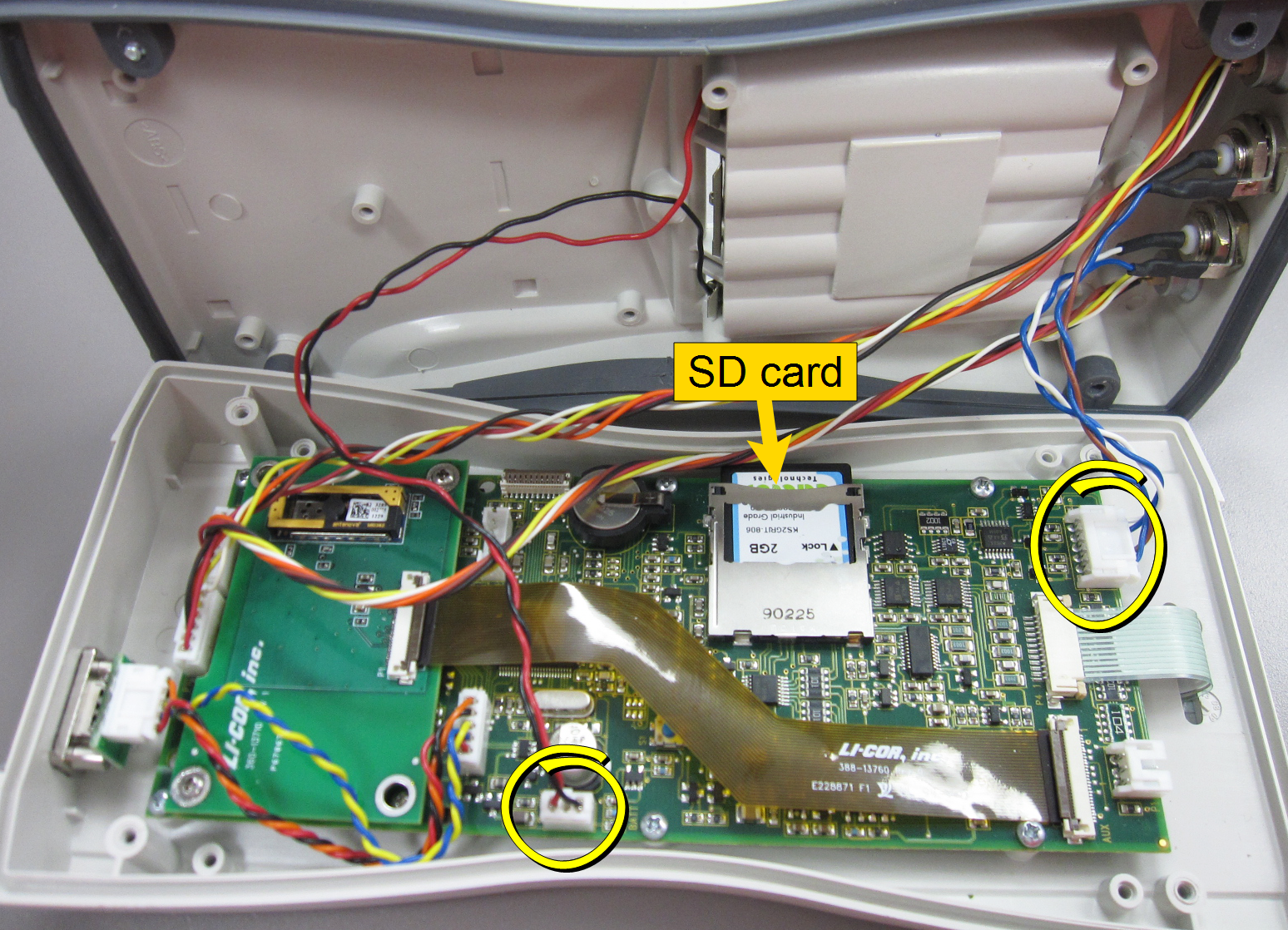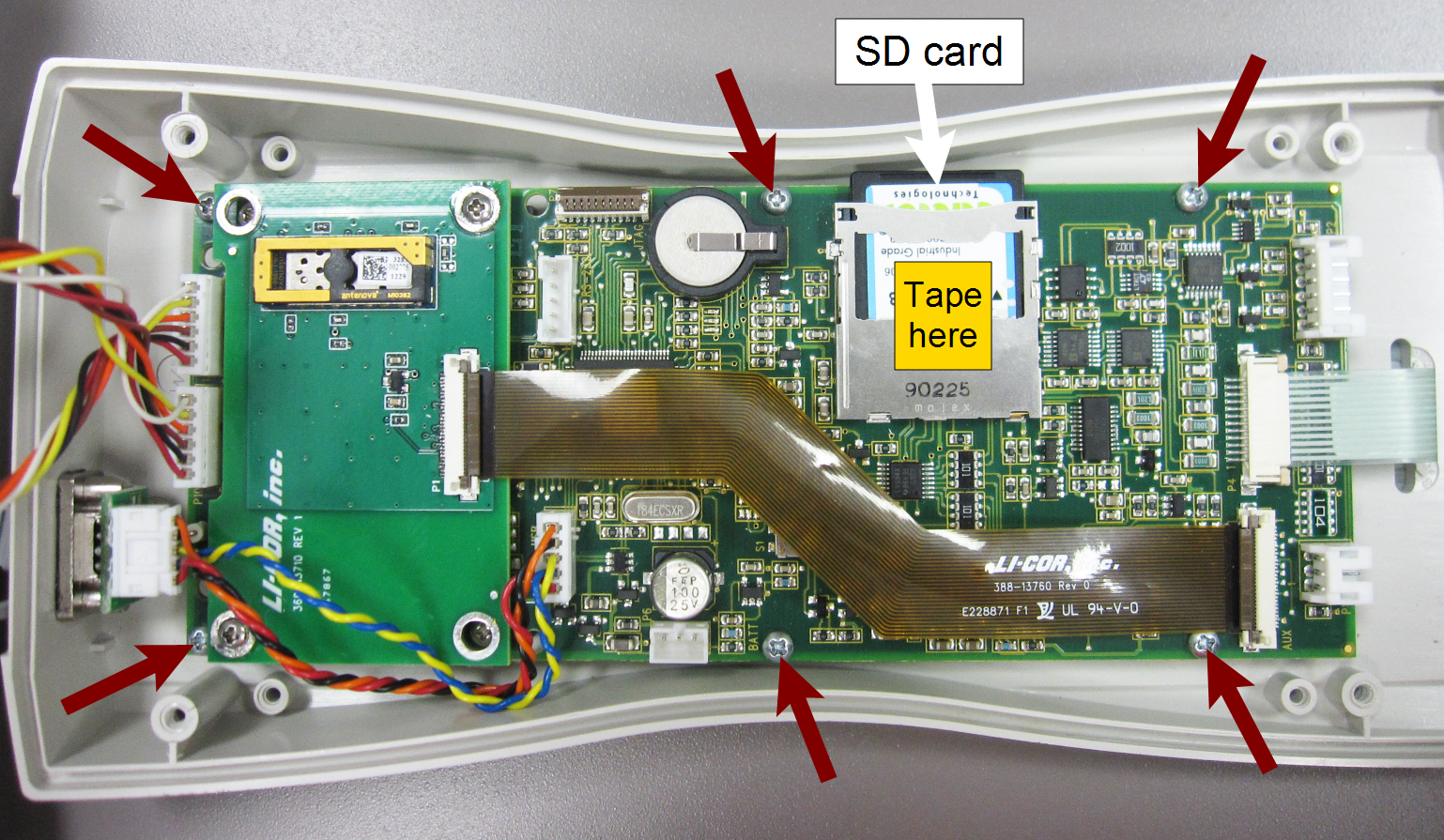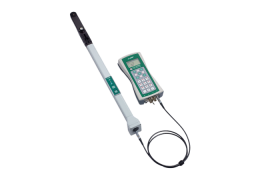Console will not power up:
This could be one of three things: low batteries, a locked processor (try removing the batteries for a few seconds), or a short in a wand (try disconnecting all sensors).
Can’t match sensors (Console Match Procedure 2.1 - Making Two Wands Match - Console Matching):
Be sure both sensors see the same diffuse view. Also, be sure that both wand match values are set to their default values before performing a match. If the match values are not set to their defaults there is a chance that the match will fail. If you are still unable to match the sensors after restoring the default values, reset the match values to those given on the calibration sheet with the sensor. Then perform the match again.
If the sensors see direct sunlight or artificial light, then the match procedure is futile.
Instrument will not turn off:
The LAI-2200C will not power off if a data file is open or if it is reading data from the internal memory. Wait a few moments for the data transfer to finish and close any open data files, then try again. If the control unit continues to be unresponsive, press and hold the power button for 5 seconds. Open data files may be lost. If the LAI-2200C continues to be unresponsive, remove the “AA” batteries for a moment. Replace the batteries. Stored data will not be at risk, but open data files may be lost.
Instrument (wand or console) locks up:
For both the wand and console, remove and re-install the batteries.
Wand not recognized or does not respond to light:
Disconnect then reconnect the wand. After a few seconds, the control unit should begin displaying values associated with the wand.
LAI=0
Check the raw readings on the console or using FV2200. Are there both A and B records in the file? Do the relative magnitudes of the A and B records seem correct? Check the number of samples used. If it is 0, then the unit threw out all the A and B pairs because of bad readings. Set the Transcomp settings to APC and recompute the file.
Questionable MTA results:
This may indicate a problem, or be due to the method used by the control unit to compute MTA. Check the DISTS values. If they do not reflect the canopy being measured (isolated canopy or large area), MTA and LAI will be incorrect. Also, the method used by the control unit has the drawback of losing resolution near the extremes of 0° (horizontal leaves) and 90° (vertical leaves). Refer to Foliage Orientation for a plot of the polynomial used. Note that slight changes in slope (the independent variable) make a big difference at the extremes of MTA. It is not uncommon in a canopy of relatively horizontal foliage for the control unit to give MTA values from 0° to 20° or even 30° from one measurement to the next. If more accurate MTA’s are needed, use the FV2200 software to compute a mean tilt angle with the Constrained Least Squares technique.
Data will not read to memory or transfer to a computer:
In rare cases, such as after a fall, the SD memory card can slip out of place. Follow these steps to check the SD card and put it back in place if needed:
- Power off the instrument and remove the AA batteries, if installed (instructionsMaintenance).
- Open the instrument case. If the SD card (see Figure A‑1) is touching the side of the case, it is disconnected. Continue to step 3 to put it back in place. If there is a gap between the SD card and the instrument case, then the SD card is not out of place. In that case, contact LI-COR technical support for assistance.
- Disconnect the light sensor and power cable connectors (circled above) from the main PC board.
- Using a small Phillips screwdriver, remove the six screws (see arrows below) that attach the main PC board to the instrument case.
- Lift the main PC board slightly above the edge of the instrument case, and push the SD card firmly into the slot. It will “click” into place when properly inserted.
- Reinstall the main PC board, replacing the six screws. There should now be a small gap between the SD card and the side of the insrument case. To help prevent the SD card from coming loose again, you can place a small piece of tape over the SD card and its metal card slot, as indicated in figure 11-2.
- Reconnect the light sensor and power cable connectors to the main PC board.
- Reassemble the case.
- Reinstall the AA batteries and battery cover.


If you continue to have difficulty transferring data or reading to memory, please call LI-COR technical support or email envsupport@licor.com for assistance.
